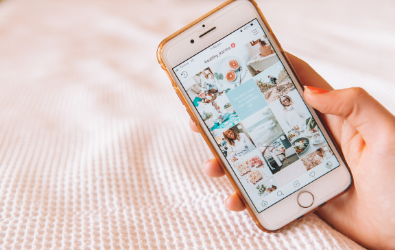As public relations professionals, we all know the term “media relations.” Usually, that means researching reporters who are likely to cover your story, pitching your idea, and if all goes well, securing earned coverage in a newspaper, magazine, TV program, etc. In other words, PR people and reporters help each other do their jobs. Now, a new type of media relations, influencer relations, has become highly popular in PR and marketing campaigns. Influencers, unlike reporters, are not people whose jobs are to seek new, relevant information for a media outlet. Each influencer is a specialist in one or a few specific topics who creates original content to promote themselves to their audiences.
Influencers can help nonprofits greatly by using their industry expertise and audience reach to increase awareness of each partner organization’s mission, goals, and relevant news. In other words, nonprofits that partner with influencers have more opportunities to showcase their good work, which in turn attracts volunteers, donors, and sponsors who believe in the same causes.
What makes someone a legitimate influencer? Here are two main ways to tell:
- How big their fanbase is. People can’t become persuasive unless they have an audience to persuade. In the case of product promotion, influencers want their audience to support the product or cause that they’re endorsing. Someone with 1,000 followers is less likely to persuade as many audience members as, say, someone with 100k followers. Although this is not always the case, people do tend to give the ones with a high follower count more credibility in their respective niches.
- How high their engagement rate is. Another key sign of an influencer is how high his or her engagement metrics are. If an Instagram influencer or blogger has 5,000 followers and they receive over 4,000 likes and lots of comments on each piece of content created, they have an 80 percent engagement rate – meaning that their followers care enough about their content to interact with it. If another influencer in the same industry has 20,000 followers but he or she only receives about 1,000 likes per post, then the former person is the true influencer because the latter only has a 0.05 percent engagement rate among their audience members. As influencers gain more followers, they need their engagement rate to have a positive correlation with their fanbase size in order to stay relevant.
Now that we know what makes someone a true influencer, we have to know how to find them and the best way to interact with them for a mutually beneficial relationship.
- Search for people by location, industry, and medium. By definition, an influencer is anyone who has the power to affect others’ purchase decisions or their beliefs and perceptions in general. Thus, they can be bloggers, industry thought leaders, traditional celebrities, or social media content creators. To save time and energy, narrow your search down by focusing on specific keywords, e.g. “Best environmental bloggers in Boston.” When you set parameters that are relevant to your campaign and purpose, you are far more likely to find the people you’re looking for.
- Know your influencer. Just like with pitching to reporters, you should always do research on each individual influencer to know what type of content they post and who their target audience is before pitching to them.
- Know what you are willing to pay. A key factor to keep in mind when finding the right influencers is compensation. Some influencers with 100K+ followers can charge up to $10,000 or more for one post, depending on how much time, energy, and cost would be required to create that post. If you’re a nonprofit without much cash to spare, don’t fret! If you target influencers with a smaller to mid-size following who have high engagement rates and an authentic passion to your shared cause, consider giving them gift cards and/or free tickets to parties/events as compensation. When I worked with local fashion influencers to promote Goodwill Boston as a go-to Halloween costume destination, Goodwill offered each influencer a $25 gift card to any of its Boston stores. All the influencers were satisfied and one of them even came back to promote our next campaign! Other excellent forms of compensation are sharing the influencer’s posts and, if said influencer’s mission and values align with those of your organization, offering to contribute a guest post to their channels.
Now that you know what to expect in influencer relations, don’t be afraid to put yourself out there and share your organization’s good work with experts in your industry. With a little bit of persuasion and a lot of passion, you can build some of the most mutually beneficial relationships in your career.


